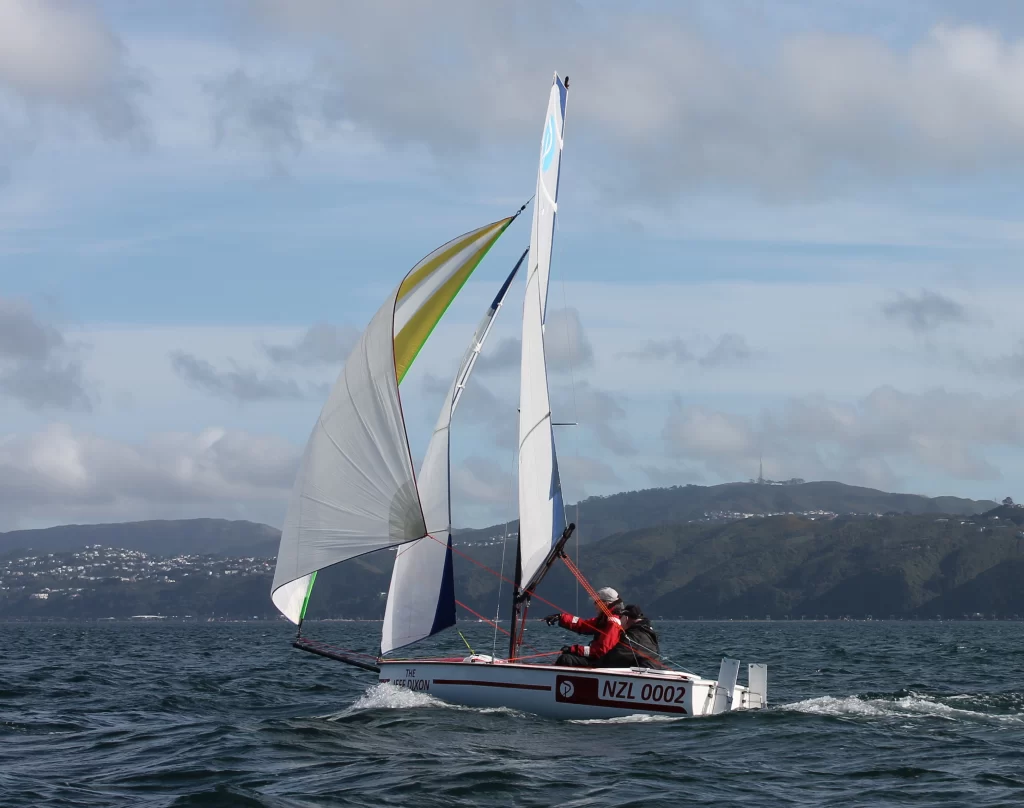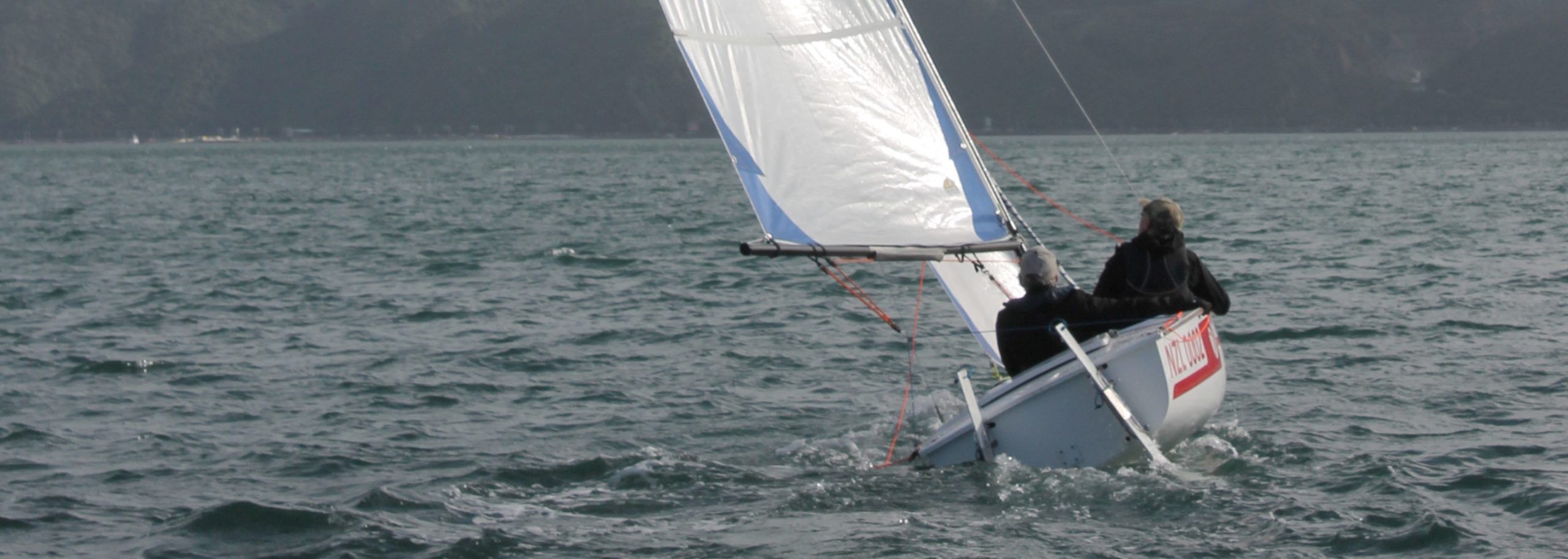A Wellington-based organisation for disabled sailors is getting ready to put a new sailboat into volume production. Sailability Wellington, ably led by Don Manning, has been working on the new boat for several years. Last Friday, I joined them for a very enjoyable sail around Wellington Harbour.
I first heard about the project when Don called me asking about a hull design. Looking over Don’s brief, I could see the need for an entirely new hull form. From the sailor’s perspective, Don’s proposal made perfect sense: A 14-footer that would carry two people sitting side by side. At least one person would have a physical limitation, and both could be men. A few minutes with a calculator confirmed my initial suspicion: The hull would be quite unlike any existing sailboat hull. On top of that, the boat had to sail well, and it had to be fun to sail. It was a big ask.
As a bonus, if I helped with the project, I would have the honour of working with legendary designer Bruce Askew, who had agreed to act as a mentor to the project. Actually, Don had me partway through presenting his brief. I had invented the ideal tool for designing a radical hull that would sail well, and I was being asked to do exactly that by a guy with a history of white-knuckle multihull racing. Even before Don name-dropped Bruce, saying “no” was out of the question.
The project was tailor-made for a parametric design application, and I had just the thing on my laptop. A few years earlier, Friendship Systems had implemented my kspline in their parametric engineering application, CAESES.
I converted Don’s brief to numbers, plugged them in to the parametric model, and developed a series of hull forms that fit the initial requirements. Over various meetings with Don, Bruce, and others, we settled on a shape with a conservative balance of features that would perform well on all points of sailing.
Since then, Don and his team have built three prototypes and tested a variety of options for the rig, daggerboard, rudders, and cockpit layout. They are now preparing for an initial production run of six boats. This is where any development project gets really interesting. Initial production is expensive. There are moulds and tooling to produce, parts and materials to buy, and production processes to develop. Sailability Wellington needs to raise about $250,000 to finance this stage of the project.

Sailing last Friday was an absolute delight. We left Seaview Marina shortly after ten a.m. on Sailability’s 5-metre chase boat, following the ParAble-Whakatauki into a moderate norwest breeze. Hopping on board, I immediately noticed how stable this boat is. With a long daggerboard, and ballast concentrated in a bulb, it’s easy to walk around on the ParAble-Whakatauki, even for a 68-year-old bloke weighing 105 kg.
On this part of Wellington Harbour the norwest is puffy and turbulent. No problem. Just haul in the mainsheet and off you go, punching the chop and powering along. In the stronger gusts a slight ease was all that was needed. Downwind with the gennaker was just as effortless. Unfurling, gybing, furling: None of it would scare my grandma. The boat is that easy to sail. I was having so much fun I could have stayed out sailing for a week or two.
Back on the chase boat I noticed something important: Not only is this thing easy to sail, it’s fast. Not white-knuckle “blink and you’ll broach” fast. Fast enough upwind to embarrass plenty of small trailer yachts, and good enough downwind to keep most sailors interested. Sailability have ordered a bigger gennaker for a bit more downwind excitement. However, I think what’s really important is the boat’s versatility.
Clubs like Sailability Wellington really don’t need any other type of boat. All their members can sail the ParAble-Whakatauki, from absolute beginners to experienced sailors, from cruisers to hard-core racers. In addition, the boat is so much fun that I suspect it will appeal to plenty of people outside the “sailing for the disabled” community.
It’s a privilege to contribute to the ParAble-Whakatauki project. The prototypes are a credit to Don and his team. I wish Sailability Wellington all the very best as they ramp up production of this fun little boat.
We are technorg.
